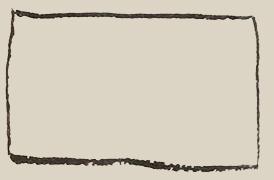cuachtli (Mdz30r)
This glyphic element for a large cotton cloth (cuachtli has been carved from the compound sign for the place name, Cuachquezaloyan. The cloth is outlined in black but its color is white or neutral. It is rectangular.
Stephanie Wood
c. 1541, but by 1553 at the latest
Stephanie Wood
cloaks, cloths, blankets, mantas, cobijas, feathers, plumas
A cloth, perhaps a cuachtli. This rare survivor, a manta fashioned from white cotton bordered with alternating white and blue bands, was found in Ofrenda 102 at the site of the Templo Mayor. According to the Museo del Templo Mayor, the stitching transversing the piece probably was used to attach feathers, leading this piece to be identified as an iztac ihuitl tilmatli, or feathered white manta. Staining is thought to have come from other archaeological pieces found in association with it. Photograph by Stephanie Wood, 15 February 2023; this commentary by Robert Haskett, who has paraphrased information provided by the Museo.

cuach(tli), a large cotton cloth, https://nahuatl.wired-humanities.org/content/cuachtli
la manta
Stephanie Wood
Codex Mendoza, folio 30 recto, https://digital.bodleian.ox.ac.uk/objects/2fea788e-2aa2-4f08-b6d9-648c00..., image 70 of 188.
The Bodleian Libraries, University of Oxford, hold the original manuscript, the MS. Arch. Selden. A. 1. This image is published here under the UK Creative Commons, “Attribution-NonCommercial-ShareAlike 3.0 License” (CC-BY-NC-SA 3.0).




